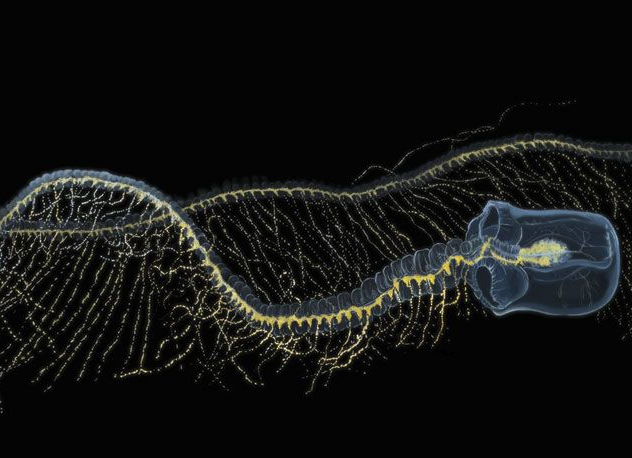Giant Siphonophore

Giant conjures up certain expectations, and the ocean has a high bar to meet when discussing it. The largest animal to have ever lived, the blue whale, calls this place home. A huge siphonophore in the sea had better be something to behold if it exists. Fortunately, the moniker isn't just a smokescreen; this object actually is enormous. By no means is it as large as a blue whale, but it's still no lightweight.
In the sea, there are close to 200 different types of siphonophores, and explaining them in simple terms is difficult. As colonial organisms, they are first and foremost a collection of things rather than "a" thing. But not all of them are the same. Different components serve various purposes. There is a sort of "primary" portion, which you could describe as the head, and then there are other parts that develop on their own and can assist the entire organism with eating, swimming, digesting food, and other similar activities. Imagine it as a little bit like a deep sea Voltron, made up of numerous little components that are put together to form a useful whole.
Around, the enormous siphonophore is roughly the thickness of a broom handle. Not at all enormous. It can, however, also extend to a length of up to 130 feet. It only has to compete with the bootlace worm, which has been seen to grow a little longer, making it by far one of the longest organisms in the world. However, one that was spotted off the Australian coast was thought to be roughly 150 feet long.
The enormous siphonophore is fortunately pretty innocuous and feeds on little crustaceans and other creatures that are best characterized as gelatinous, which is fortunate for those of us who aren't giants. It attracts prey with bioluminescence and kills them with a toxin resembling that of jellyfish. Although that portion may seem dangerous, keep in mind that these are deep-sea monsters. In reality, they cannot exist close to the surface since the pressure at the surface will cause their bodies to rupture.
Kingdom: Animalia
Phylum: Cnidaria
Class: Hydrozoa
Order: Siphonophorae
Family: Prayidae
Genus: Praya
Species: P. dubia










